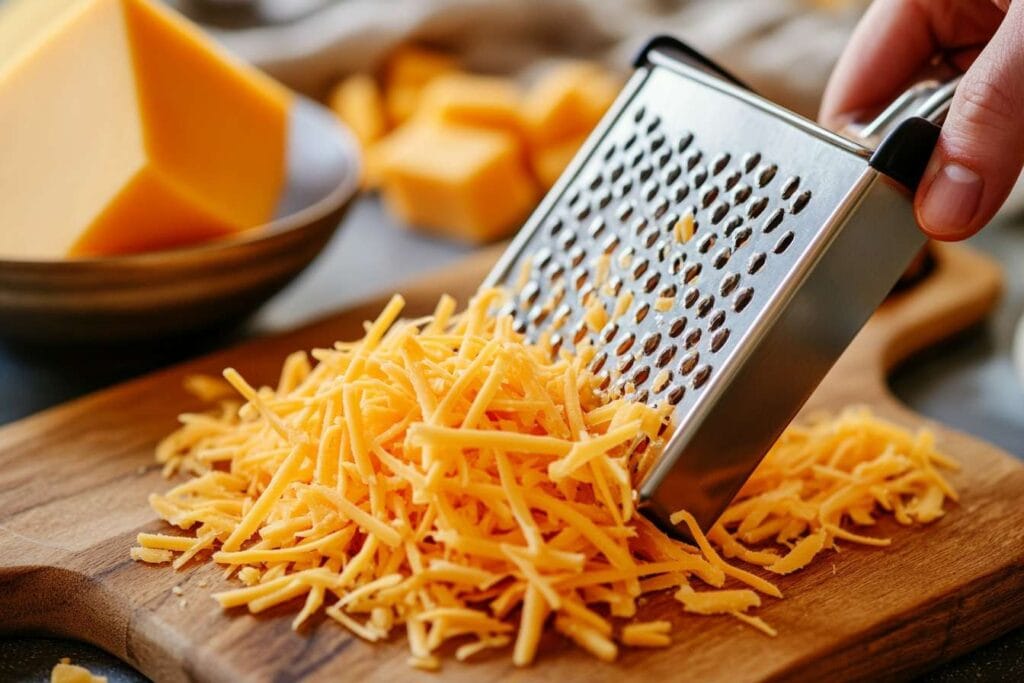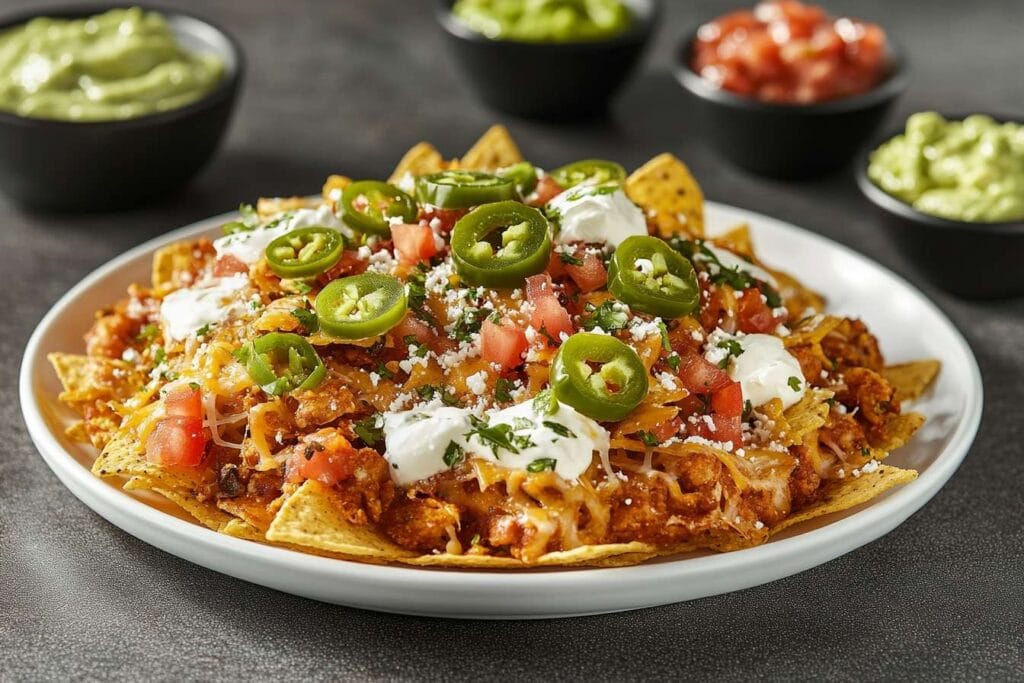Table of contents
What Makes This Cheese a Kitchen Favorite?
Shredded cheese is a kitchen staple loved by home cooks and professional chefs alike. But what exactly is it? Simply put, shredded cheese refers to cheese that has been cut or grated into thin strips or small pieces. This handy preparation makes it easier to melt, mix, or sprinkle cheese over your favorite dishes. From gooey pizza toppings to a creamy pasta sauce, shredded cheese is incredibly versatile.
A Closer Look at Types and Varieties
Let’s break it down further. Shredded cheese comes in various types, from pre-packaged options in your grocery store to freshly shredded cheese you prepare at home. Common types include mozzarella, cheddar, and parmesan, but the list doesn’t stop there. You can even find specialty blends combining multiple cheese varieties for unique flavor profiles.
Top Ways to Use It in Your Recipes
What can’t you do with shredded cheese? Sprinkle it over nachos for the perfect snack, mix it into soups for added richness, or bake it into casseroles to create a cheesy crust. Shredded cheese is a dream ingredient for making dishes creamier and tastier without much effort.
For a perfect example of a cheese-based recipe, check out this guide to baked chicken cutlets a fantastic dish to pair with gooey, melted cheese.
The Most Popular Choices for Every Dish
When you wander down the cheese aisle, the variety can be overwhelming. Here are some of the most popular options to consider:
Why Mozzarella Tops the List
Mozzarella is a soft, mild cheese often used in Italian cuisine. It melts beautifully, making it a top choice for pizza, lasagna, and even simple garlic bread.
Cheddar: A Classic That Never Fails
Cheddar, with its bold and tangy flavor, is a fan favorite for tacos, burgers, and mac and cheese. Whether you go for mild or extra sharp, it adds a delicious punch to any recipe.
Parmesan: Adding a Nutty Twist
Parmesan is a hard, nutty cheese that’s often grated or shredded. It’s ideal for sprinkling over pasta dishes, soups, and salads for an umami kick.
Discovering Specialty Cheese Blends
Love to experiment? Specialty mixes like Mexican blends or Italian four-cheese shreds combine multiple flavors to give your dishes an edge. Try using these for quesadillas or fancy baked ziti.
Choosing and Using Cheese Like a Pro
When faced with so many choices, picking the right shredded cheese can feel like solving a puzzle. Here’s a guide to help you choose the best option for your cooking needs.
Fresh or Packaged: Which Is Right for You?
One big question is whether to shred your cheese at home or buy it pre-packaged. Freshly shredded cheese often tastes better and melts more smoothly because it doesn’t contain anti-caking agents or preservatives. However, pre-packaged options are incredibly convenient and have a longer shelf life, making them a lifesaver for busy weeknights.
Factors to Consider: Quality, Flavor, and Storage
When selecting shredded cheese, think about its intended use. For pizzas and pastas, go for cheeses that melt well, like mozzarella or a blend. If you’re looking to add a tangy punch to salads or soups, shredded cheddar or parmesan might be a better choice. Always check the expiration date and store your cheese properly to maintain its freshness.
Recognizing Additives in Pre-Packaged Shredded Cheese
Have you ever noticed that pre-packaged shredded cheese doesn’t clump? That’s because it often contains additives like potato starch or cellulose. While these are safe to eat, they can affect the texture and flavor of the cheese when melted. If you want pure cheese with no extras, shredding it at home is the way to go.
The Health Benefits and Drawbacks of Shredded Cheese
Let’s dive into the good, the bad, and the cheesy when it comes to shredded cheese and your health.
Nutritional Benefits of Shredded Cheese
Shredded cheese is packed with nutrients like calcium, protein, and vitamins A and B12. These nutrients are essential for strong bones, muscle repair, and overall health. Adding a moderate amount of cheese to your meals can give you a nutritional boost.
Common Health Concerns: Calories, Additives, and Lactose
On the flip side, cheese can be high in saturated fats and calories, so it’s important to enjoy it in moderation. If you’re lactose-intolerant, some shredded cheeses (especially aged ones like parmesan) may still be tolerable due to their lower lactose content. However, always check the label and consult with your doctor if you have dietary concerns.
Looking for a healthier dish to try with shredded cheese? This recipe for creamy parmesan Italian sausage soup is a hearty, flavorful option that pairs perfectly with shredded parmesan.
Common Problems with Shredded Cheese
Even the best ingredient has its quirks, and shredded cheese is no exception. Here’s how to tackle some common issues.
Clumping and Stickiness: Causes and Solutions
Ever opened a bag of shredded cheese to find it clumped together? This often happens because of moisture or improper storage. To prevent this, store your cheese in an airtight container and keep it in the refrigerator’s coldest section. If clumping happens anyway, a light sprinkle of cornstarch can help separate the shreds.
Short Shelf Life: Storage Tips for Longevity
Cheese doesn’t last forever, but there are ways to extend its shelf life. Always reseal your bags tightly or transfer the cheese to an airtight container. You can also freeze shredded cheese to keep it fresh for up to six months. Just thaw it overnight in the fridge before using it.
Preservative Additives and Taste Issues
Some pre-packaged shredded cheeses can have a slightly chalky taste due to preservatives. If this bothers you, opt for brands with fewer additives or shred your cheese at home for a more natural flavor.
How to Make Shredded Cheese at Home
If you’re looking for a fresher, more flavorful option, making shredded cheese at home is surprisingly easy. Plus, it allows you to control the quality and avoid additives.

Tools and Techniques for Shredding Cheese
First, gather your tools. You’ll need a block of your favorite cheese and either a box grater, food processor, or handheld shredder. If you’re shredding softer cheeses like mozzarella, try freezing the cheese for about 15 minutes beforehand. This makes it firmer and easier to grate. Harder cheeses, like parmesan, can be grated directly.
If you have a food processor, use the grating attachment for quick and even results. It’s a lifesaver when you’re preparing large quantities for recipes like blackened chicken alfredo, which calls for plenty of cheese.
Simple Tips for Storing Cheese
After shredding, place your cheese in an airtight container or resealable bag. Add a pinch of cornstarch to prevent clumping if you’re storing it for a few days. Homemade shredded cheese can last in the refrigerator for up to a week, or you can freeze it for long-term storage. Just remember to label your containers with the date!
Innovative Recipes with Shredded Cheese

Shredded cheese isn’t just a topping it’s the star of countless delicious dishes. Here are some creative ways to use it in your cooking.
Breakfast Ideas with Shredded Cheese
Kickstart your morning with cheesy breakfast dishes. Sprinkle shredded cheddar on scrambled eggs or omelets for a creamy upgrade. You can also add shredded cheese to breakfast casseroles or sprinkle it over avocado toast for a savory twist.
Lunch and Dinner Recipes Using Shredded Cheese
For lunch, try a gooey grilled cheese sandwich or sprinkle shredded mozzarella on top of a hearty bowl of soup. When dinnertime rolls around, baked pasta dishes like lasagna or ziti are perfect for using multiple types of shredded cheese. Pair these meals with a cheesy side dish like caprese skewers for a balanced plate.

Creative Snacks and Appetizers Featuring Shredded Cheese
Get creative with cheesy appetizers. Make cheesy breadsticks by sprinkling mozzarella on pizza dough, or whip up a batch of cheese-filled jalapeño poppers. Shredded cheese also works great as a topping for loaded nachos, paired with salsa, guacamole, and sour cream.
The Environmental Impact of Shredded Cheese Packaging
While shredded cheese is undeniably convenient, its packaging often raises environmental concerns. Let’s explore ways to minimize your ecological footprint while enjoying this beloved ingredient.
Eco-Friendly Alternatives for Storing Shredded Cheese
If you’re shredding cheese at home, skip the single-use plastic bags. Instead, store your cheese in reusable silicone bags or glass containers. These options not only reduce waste but also keep your cheese fresh longer. Plus, they’re easy to clean and can be used repeatedly.
Recycling Pre-Packaged Cheese Bags
Pre-packaged shredded cheese typically comes in plastic bags that aren’t always recyclable through curbside programs. However, many grocery stores now offer drop-off points for recycling soft plastics. Before tossing your bag, check the label it might indicate if the packaging is recyclable. Small steps like this can make a big difference in reducing landfill waste.
For more ideas on eco-conscious cooking, consider recipes that minimize packaging waste, like a homemade burger bowl featuring fresh ingredients.
Frequently Asked Questions About Shredded Cheese
Got questions about shredded cheese? You’re not alone! Here are some common queries answered to make your cheese experience even better.
Can Shredded Cheese Be Frozen?
Yes, shredded cheese freezes wonderfully! Whether store-bought or homemade, it’s a great way to extend its shelf life. Just place the cheese in an airtight container or freezer bag, label it, and store it for up to six months. When you’re ready to use it, thaw it in the refrigerator overnight for best results.
What are the Best Storage Practices for Shredded Cheese?
To keep shredded cheese fresh, always store it in the coldest part of your fridge. Use an airtight container or resealable bag to prevent moisture from getting in. If you notice clumping, sprinkle a little cornstarch on the cheese and give it a gentle shake.
How Do You Prevent Clumping in Pre-Packaged Shredded Cheese?
Pre-packaged shredded cheese often clumps due to moisture. To avoid this, store it in a dry, airtight environment. If you’re shredding cheese at home, a light dusting of cornstarch or flour can help keep the shreds separate.
People Also Ask
Why Should You Stop Buying Shredded Cheese?
Pre-packaged shredded cheese saves time, but it comes with a few drawbacks. Many brands add chemicals like anti-caking agents to keep the cheese from clumping and preservatives to make it last longer. These additions can change the texture and taste. Freshly shredding cheese from a block gives you better flavor and a smoother texture. Plus, you avoid unnecessary additives.
What Types of Cheese Can You Shred?
You can shred almost any type of cheese, but softer ones like mozzarella, cheddar, and Monterey Jack work best. These cheeses melt easily and are perfect for many dishes. Harder cheeses, such as parmesan or romano, are often grated, but you can shred them finely if needed for recipes.
Is Shredded Cheese Healthy?
Shredded cheese offers nutrients like calcium and protein, which are great for your bones and muscles. However, it also has calories and saturated fat, so eating it in moderation is a good idea. If you want a healthier option, shred your cheese at home. This helps you avoid the additives found in pre-packaged versions.
Should You Buy Shredded Cheese or Block Cheese?
Block cheese is usually the better choice. It tastes fresher, melts more smoothly, and gives you more options. Pre-shredded cheese is convenient but comes with additives and doesn’t melt as well. On top of that, buying blocks of cheese can save money and give you control over how you prepare it.
What’s the Best Shredded Cheese for Melting?
The best cheese for melting depends on your recipe. Mozzarella is stretchy and gooey, making it ideal for pizza or lasagna. Cheddar is creamy and works great in mac and cheese or grilled sandwiches. If you’re looking for something rich and flavorful, Gruyère or Fontina are perfect for fondues and baked dishes.
Is Sargento Cheese Real?
Yes, Sargento cheese is made from real ingredients. It is not a processed product with fillers or emulsifiers. Sargento focuses on providing natural cheese with great taste. Their shredded cheese comes in many blends, so you can choose the right one for your cooking needs.
Conclusion: Embracing the Versatility of Shredded Cheese
Shredded cheese is a true culinary MVP, bringing flavor, texture, and creaminess to countless dishes. Whether you’re sprinkling mozzarella on a pizza, mixing cheddar into a casserole, or topping a salad with parmesan, there’s no limit to what you can create. By choosing the right type of cheese, storing it properly, and exploring eco-friendly practices, you can make the most of this delicious ingredient.
So, the next time you’re in the kitchen, don’t hesitate to grab a handful of shredded cheese it might just be the secret ingredient your dish needs.
